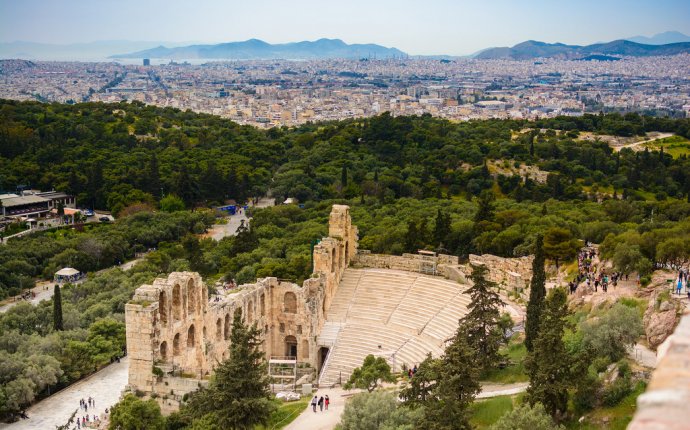
Odeon of Herodes Atticus Athens Greece
Over the 52 years of the Athens Festival, the Herodeon has hosted almost all the leading lights of Greek and international post-War music, dance and theatre. More specifically, the first three decades of the institution opened up an irreplaceable, and thus priceless for its time, channel of communication between the Athenian public and the cultural scene of the West, giving Greek artists the opportunity to distinguish themselves internationally.
It was built between 160 and 174 BC by the immensely wealthy Herodes Atticus, a philosopher from an old Athenian family, in memory of his wife Regilla.
A typical Roman odeon, large and exceptionally well-appointed, it was primarily used as a music venue. Its marble auditorium extends slightly beyond a semi-circle; it had a diameter of 80 metres and seated 4, 800 spectators. The semi-circular orchestra was paved with black and white marble. 92 metres long and 28 metres high, and built of quarried stone, the impressive stage building was flanked by staircases decorated with mosaics. As was usual in Roman odeons, the inward-facing three-storey stage façade was inlaid with different coloured marbles and featured decorative pilasters and alcoves housing statues of members of the imperial family, as well as members of Herodes Atticus’ own family. It is clear from the archaeological finds that the Herodeon was covered, at least in part, by a wood and tile roof.
A brief archaeological timeline
When Pausanias visited Athens during the reign of Marcus Aurelius, he described the Herodeon as “the finest building of its type”. Unfortunately, the Herodeon was destroyed by a fire during the invasion of the Erouloi in 268 BC, less than a century after it was completed. Thenceforth, the theatre was used as a source of quarried stone, a dwelling, and a fort. In 1667, it was incorporated into the wall encircling the southern slopes of the Acropolis, and in 1857, shortly before the first archaeological investigations were undertaken, the auditorium was covered with a layer of soil 12 metres deep, and the site was being used to cultivate crops. A thorough excavation revealed the auditorium to be in extremely bad condition, with only a few rows of seats still in situ, and these highly calcified by the third-century BC fire.